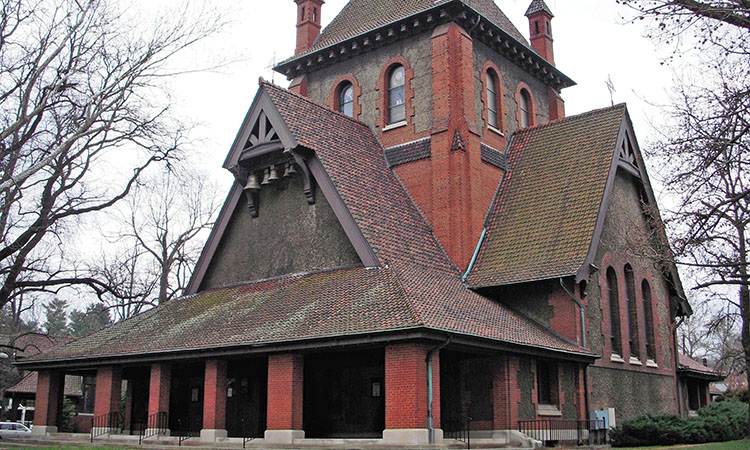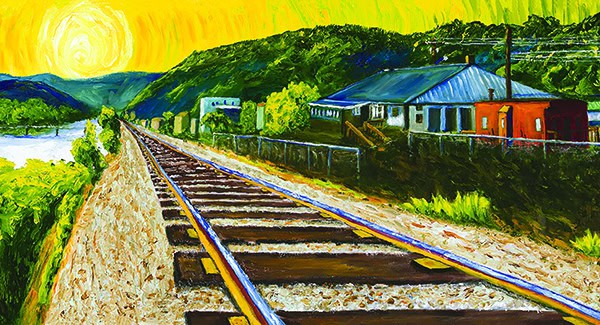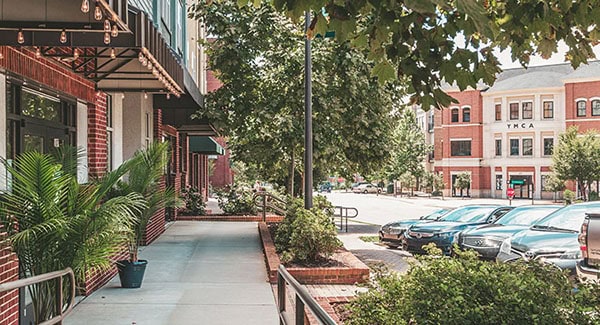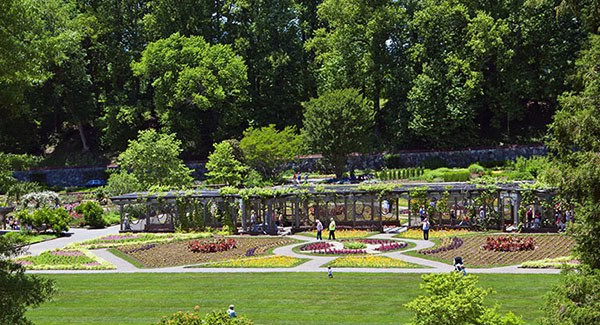Last Updated on June 15, 2023
Located south of Downtown Asheville, and hugging the French Broad River, Biltmore Estate, and town of Biltmore Forest is the iconic Biltmore Village district. The area was once its own town and can still be distinguished by its distinct architectural style. In fact, its location and architecture are intimately woven together in the fabric of its history.
Today, let’s unwrap a few points of interest about the district that are largely overlooked by day-to-day visitors. Here are five interesting things you didn’t know about Biltmore Village.
Biltmore Village was originally named Best
What we know today as Biltmore Village was built at the turn of the last century by George W. Vanderbilt, creator of the Biltmore Estate. In 1889, Vanderbilt purchased the small town of Best and renamed it Biltmore Village, christening it a “company town” for the estate’s workers. The community was planned and designed to reflect the qualities of an English country village, including its defining “look” of stucco pebbledash and dark beams. The village had its own church, still in operation today as the Cathedral of All Souls, an Episcopal cathedral. It also had a hospital, shops, a school, a railroad depot (the first in the Asheville area), and other essential services.
The town was owned by the Vanderbilts until after the great flood of 1916. Biltmore Village was incorporated into the City of Asheville in the early 20th century. Today, one of the earliest examples of a planned mixed-use community is still thriving! Biltmore Village comes alive each day with an eclectic collection of shops, restaurants, and other businesses.
28 buildings are listed on the National Register of Historic Places
That’s right. Of the 113 Buncombe County buildings listed on the prestigious National Register of Historic Places, 28 of them are in the three-block radius of Biltmore Village. That’s a full one in four! And of those, 20 were designed by Richard Sharp Smith, the “resident architect” of the Biltmore Estate. Around 1900, following the completion of the Biltmore House, Sharp Smith designed and built much of the Biltmore Village District as we know it today. This includes the 14 residential buildings in the Biltmore Village Cottage District, as well as two cottages moved outside the district in the ’80s. Around the same time, Sharp Smith designed the Biltmore Shoe Store building, the set of two Biltmore Village Commercial Buildings, and Clarence Barker Memorial Hospital (built in 1907).
Another three were designed by Richard Morris Hunt, the original architect of the Biltmore Estate, before his death in 1895. The Southern Railway Passenger Depot was built in 1896 for the Southern Railway. The Cathedral of All Souls was commissioned by Vanderbilt the same year to serve as the local parish church. It is one of only six churches designed by Hunt, and the only that survives to this day. And the Biltmore Estate Office, located at 10 Biltmore Plaza, was also designed by Richard Morris Hunt and built in 1896.
The Cathedral of All Souls honors people connected to the Biltmore Estate
Internationally renowned artists Maitland Armstrong and his daughter Helen Maitland Armstrong (considered to be the finest stained glass artist in America at the time) created three memorial stained glass windows for the south transept of the Cathedral of All Souls. The windows honor Maria Louisa Vanderbilt (George Vanderbilt’s mother), architect Richard Morris Hunt, and Clarence Barker (Vanderbilt’s cousin). In 1900, they created “Ecce Homo,” a stained glass memorial at the church, for Cornelius Vanderbilt. Cornelius was the famous railroad baron nicknamed “The Commodore”—and George Vanderbilt’s grandfather.
As an aside, the Armstrongs were distantly related to George Vanderbilt by marriage. Maitland’s wife Helen Neilson was a descendant of Peter Stuyvesant, a major figure in the early history of New York City. Another of Stuyvesant’s descendents was Edith Stuyvesant Dresser, who married George Vanderbilt shortly after the completion of the Estate.
Cornelia Vanderbilt married at the Cathedral of All Souls
In April 1924, Cornelia Vanderbilt, daughter of George and Edith, married the Honorable John Francis Amherst Cecil. The ceremony took place at the Cathedral of All Souls, and Edith escorted her daughter down the aisle. According to the town’s history:
In the days before the wedding, the village bustled with activity as family members, friends, and guests from around the world arrived. The union was perhaps the most significant social event that occurred in Biltmore Village during the 1920s. As the newlywed couple left the church, they were greeted by children of Biltmore Estate workers forming an aisle with branches of flowers held high.
Cornelia’s celebrity wedding guests were not the only famous visitors to Biltmore Village. At least two presidents have visited: Theodore Roosevelt in 1902 and Barack Obama in 2010.
Biltmore Village has a largely untold military history
For a small “company town,” Biltmore Village has an interesting history as a staging ground for the U.S. military. Unfortunately, only the basics are known and few of the details. In 1898, the village greens were used for military drill exercises during the Spanish-American War. In August 1903, the 1st Regiment of the National Guard (about 600 men) made a summer encampment in the village for five days. And in 1918, while the U.S. was engaged in the first World War, Dwelling No. 16 on All Souls Crescent was leased as officers’ quarters. As of February 1920, a cottage and three stores in Biltmore Village were still being leased by the U.S. government.
Add to the history of Biltmore Village. Make it your home today!
Biltmore Village is a small commercial and residential district at the entrance to the Biltmore Estate. But it has a big history! The village was created as a “company town” for the estate workers in the late nineteenth century. And the community was designed to reflect the qualities of an English country village. Biltmore Village is now entirely incorporated into the city of Asheville, and contains an eclectic collection of galleries, restaurants, and both local and national retail shops.
Does that sound like the perfect lifestyle for you? Find your dream home in Biltmore Village now!




